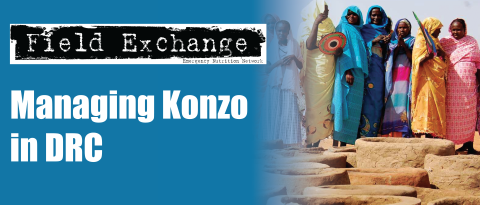En-net update
By Tamsin Walters, en-net moderator

Forty-four questions were posted on en-net between April and June 2011, eliciting 90 replies. In addition, 19 job vacancies have been advertised.
Recent discussions on en-net have included evidence of the impact of kitchen gardens on improving the quality of complementary feeding for infants and young children, mid upper arm circumference (MUAC) -only programming for treatment of moderate acute malnutrition (MAM), ready-to-use supplementary foods (RUSFs) and proposed new guidance on marketing of products, community based management of acute malnutrition (CMAM) programmes in Asia, and the challenges and successes of integrating CMAM programmes into routine Ministry of Health (MOH) activities.
There are several ongoing discussions on en-net on topical issues for which little clear guidance exists, with questioners looking for examples of what is actually happening in practice and asking for people to share experiences. Examples include malnutrition in pregnancy and lactation: what MUAC cut-offs are appropriate as admission criteria for programmes, or what cut-offs are currently in use and what is the evidence for them? How is response to treatment being measured? How are birth outcomes affected and is there useful information on this group coming out of programme evaluations to guide best practices? Another area of continued debate and discussion concerns implementation of CMAM programmes, particularly the challenges of integrating them into MOH activities and issues around ensuring that moderate malnutrition is adequately assessed and treated. The continuing debate around the effectiveness of supplementary feeding programmes (SFPs) and what appropriate alternatives exist that work, has intermittently surfaced in several questions.
Exchanges on how to accurately measure MUAC and the potential of thigh circumference as a viable alternative led to a discussion of sexual abuse perpetrated by humanitarian workers and the ongoing potential for it to happen in emergency situations. This discussion can be found in the cross-cutting issues area with links to resources from the Global Protection Cluster, http://www.en-net.org.uk/question/392.aspx.
Finally, issues over appropriate use, testing and regulation of RUSFs have been raised and discussed, and a 'spin-off' series of comments are included in this issue of Field Exchange.
To join a discussion and share your experience or to post a question, visit www.en-net.org.uk
en-net now has approximately 600 registered users, though people do not have to register to view the discussions. en-net is now 2 years old and has been adapted several times in response to suggestions from users. We are constantly looking to update it to more closely meet the needs of the nutrition community and to that end, ENN is now conducting an evaluation of the use of en-net to find out who is or is not using it, what are its perceived strengths and weaknesses and what changes both users and non-users would like to see to make it more useful for emergency nutrition practitioners in the field, as well as for the academic and research community.
We would be very grateful if you would take 10 minutes to complete the questionnaire and give us your feedback, thoughts and suggestions to help improve en-net. The questionnaire can be found at http://www.surveymonkey.com/s/en-net
Imported from FEX website


